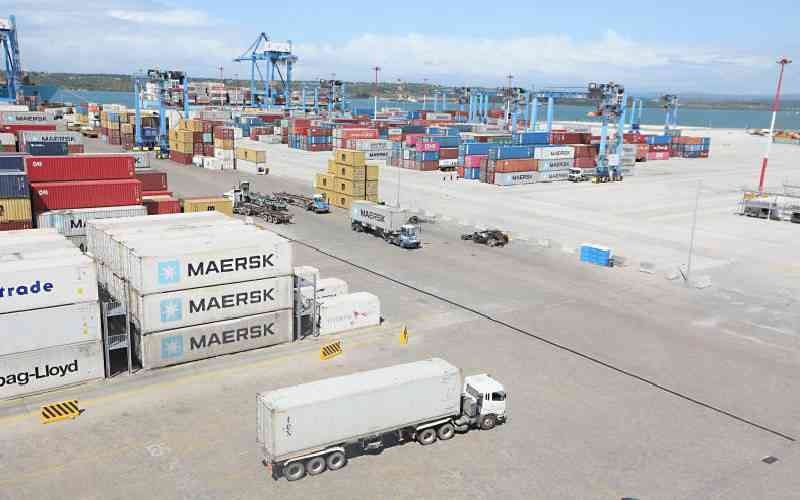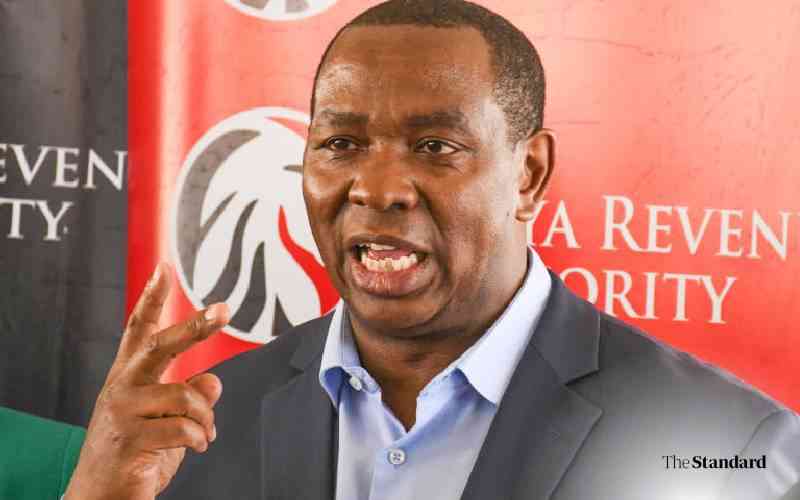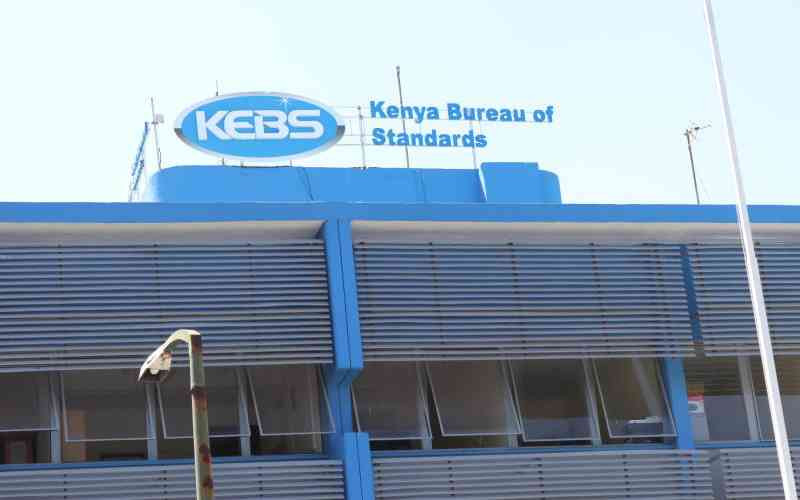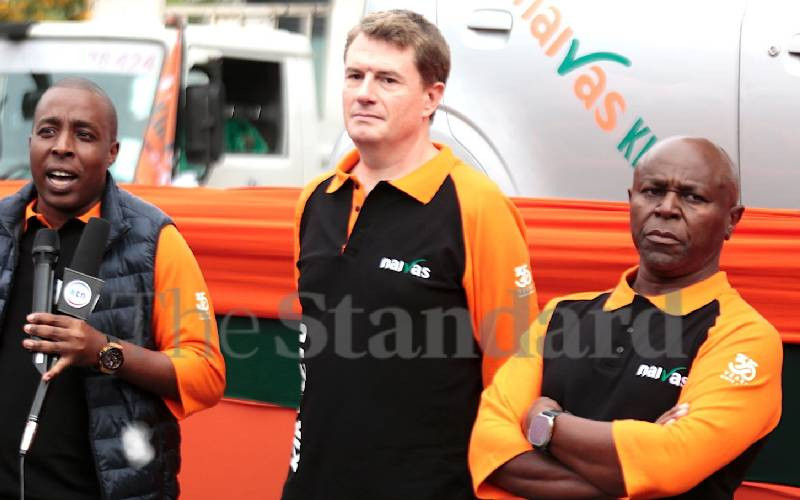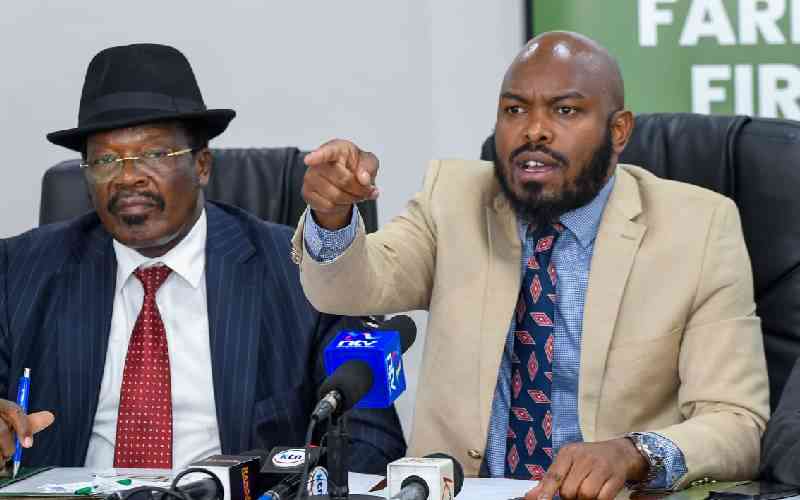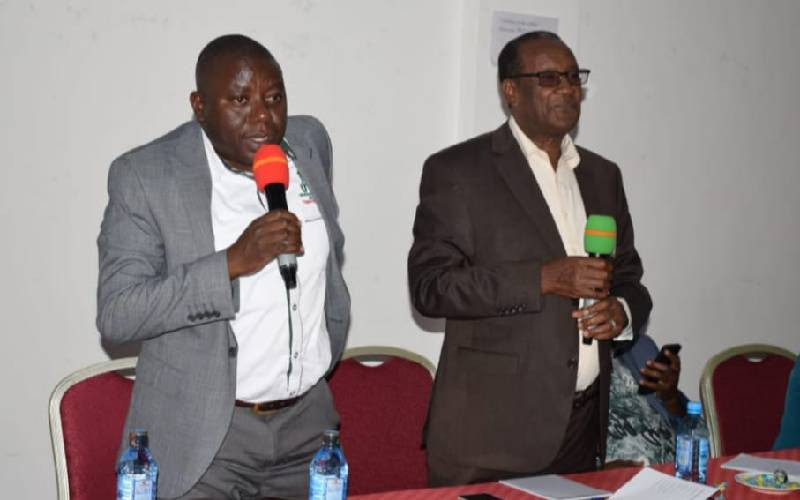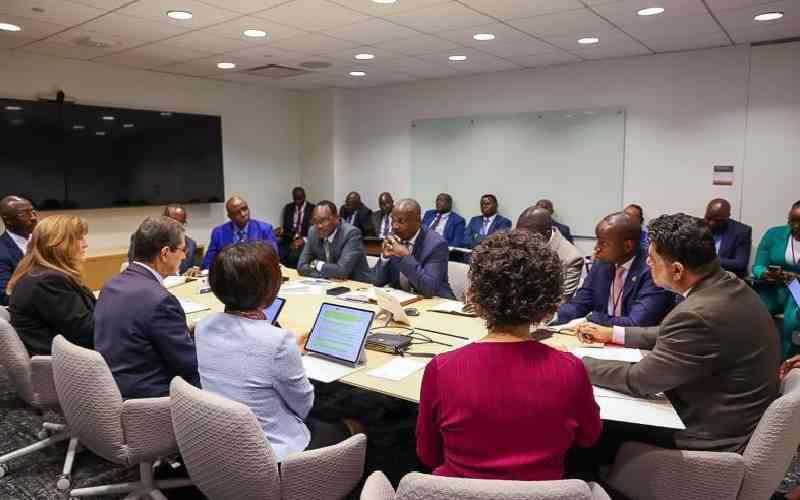
Treasury CS John Mbadi and PS Chris Kiptoo with the International Monetary Fund team during the 2025 Spring Meetings. [File, Standard]
We live in interesting times. Just as we were busy contemplating the sort of pro-poor, pro-people priorities that the Kenya Kwanza administration might share with the International Monetary Fund (IMF) during their recent visit to discuss a new program, our National Treasury loudly announced that we’ve just refinanced yet another Eurobond (and borrowed 50 per cent more just for good measure).
It’s the third time this is happening in two years, with Treasury gleefully noting that “it shows the Government’s firm commitment to managing debt more wisely, paying off loans in time, and protecting Kenyans from repayment shocks”. Anyone willing to bet that this will be one of Kenya’s major talking points at the IMF/World Bank summer meet in Washington DC this week? National Treasury leadership might have gone mum, but the Central Bank is unequivocal - repeating for the umpteenth time last week that we need a new, funded IMF program.
With this latest Eurobond deal, it is clear that these days we celebrate debt millstones – this latest one simply kicks the can down the road – not development milestones. Lest we forget, this is the same administration who, in 2022, waltzed around the country in wheelbarrows singing hatupangwingwi while unashamedly and unrealistically promising Kenyans that there would be no more borrowing. Today, public debt is about 40 per cent above where it was three years ago; and that’s with our “stable” shilling. The tax take has only grown at around half of this pace.
Even as this latest stunt in extreme financial “jiggery-pokery” was taking place, Treasury advanced the next stage in the 2026/27 budget process: release of the 2025 Budget Review and Outlook Paper (BROP). That there has been little to no official or public comment on BROP is indicative of sheer exhaustion around that endless prisoner’s dilemma that is our discombobulated fiscus.
The short story here is we plan to raise revenue by about Sh200 billion and lift spending by almost Sh400 billion while claiming we are “fiscally consolidating” when the overall fiscal deficit (including interest) will rise from 4.7 per cent of GDP expected in current 2025/26 to 4.9 per cent of GDP in 2026/27. The 60 or so pages in BROP that explain this are ornamental; lipstick on a pig.
With Treasury role playing “receiver-manager” in matters economy and fiscus, don’t you get the sense that this is more than “liquidity management”, and – given that we are definitely in a debt trap – we are staving off insolvency? Put differently, do/will we have the economic engine to escape our debt snare? Relatedly, when do we elevate from this external debt discourse and back to homegrown development debate? Something is definitely broken in our system. And all these empowerment events and visits to the house on the hill are temporary, political band-aids.
The short answer is this breakdown, as said before, is in our policy to results cycle, above and beyond the public finance management, or annual budget, cycles. It doesn’t work end-to-end. Let’s look at the first point of breakage – the disconnect between planning and budgeting. We will get to implementation in a future piece. For illustration, let’s use current regime numbers.
This administration was elected on “The Plan”, which they translated into the “Bottom-Up Economic Transformation Agenda” (BETA) which, after 18 months of roadside declarations, was eventually incorporated into the Fourth Medium-Term Plan under Kenya Vision 2030 (MTP IV).
Now for the numbers. As a five-year plan from 2023 to 2027, MTP IV was costed at Sh16.1 trillion in “investment” (most of which we call “development expenditure”), or an average (for this illustration) of Sh3.2 trillion a year. However, MTP IV was the national government plan, so every one of our 47 counties prepared their own five-year 2023 to 2027 plans – County Integrated Development Plans (CIDPs). Aggregate investment planned across all counties was Sh5.2 trillion (about Sh22 billion per county per year). To complicate things, counties also identified joint national-county-donor “flagship” investments, which added another Sh2.1 trillion.
So, the total investment plan according to our national and county planning units was Sh23.4 trillion, or Sh4.6 trillion a year on average. Think of this as our public participation outcome, that the totality of government (what we call “general government”) committed to spending Sh4.6 trillion in investment every year as agreed with the people. In the three years (including this year) since 2022, shouldn’t we see Sh14 trillion in “change” across the length and breadth of Kenya?
Now let’s look at the budget, again using three years. Total national government development budget has amounted to Sh2.2 trillion, with counties at Sh600 billion. So, the planners tell us we should expect Sh14 trillion in development, but the budget people can only afford Sh2.8 trillion. And we haven’t even got to implementation; we are simply using the original budget data!
This is the first planning-budget disconnect – what’s the use of big plans if we get small budgets? Treasury and budget people will tell you our plans are “wish lists”, but then, why plan at all? On the other hand, if the plans are “the people’s needs”, what are our “resource mobilizers” doing?
Which brings us to the reverse question. How was the Sh16.1 trillion national government need to be financed? Well, Sh13.3 trillion, or Sh2.7 trillion a year, was to come from government, that is, taxes/revenues in a “no borrowing” scenario (remember campaign promises?), plus Sh2 trillion in Public Private Partnerships (PPP) and Sh800 billion from development partners. How are we doing on these last two?
Of course, if this scenario was to hold, and we assumed that Sh2.7 trillion a year was new development spending for a government with an existing average recurrent cost base approaching Sh3 trillion (including debt interest), existing development spending at Sh750 billion and county allocations at Sh400 billion, we would need Sh6.85 trillion in revenues simply to balance the books. We have never hit more than Sh2.5 trillion in taxes, or Sh2.7 trillion in ordinary revenues.
Stay informed. Subscribe to our newsletter
But, remember, national government promised the people Sh3.2 trillion of annual “development”! It gets even more complicated with counties. The idea, in aggregate, was that, over the five years, Sh2.2 trillion would be raised through the equitable share, Sh408 billion would come from own source revenue, 222 billion from development partners, Sh274 billion from joint projects (read, national government and donors), Sh43 billion from PPPs, Sh49 billion from national government grants and Sh97 billion from other sources. Yet this would still leave an investment fund-raising deficit of almost Sh4 trillion to meet the promises to the people that added up to Sh7.3 trillion!
Remember, too, as with national government, that there’s an existing cost base in counties, so they would be lucky to apportion as much as 40 per cent of the equitable share to this investment. In other words, the deficit rises to Sh5.3 trillion. It is only in Kenya where national government has a balanced plan and a deficit budget, while counties have deficit plans and balanced budgets!
But here’s the second, reverse planning-budget disconnect – do we plan with what we want or with what we have? We are only touching the tip of the iceberg, but if the people agreed on Sh23.4 trillion in development, shouldn’t this, not debt or BROP, be what government tells us?
